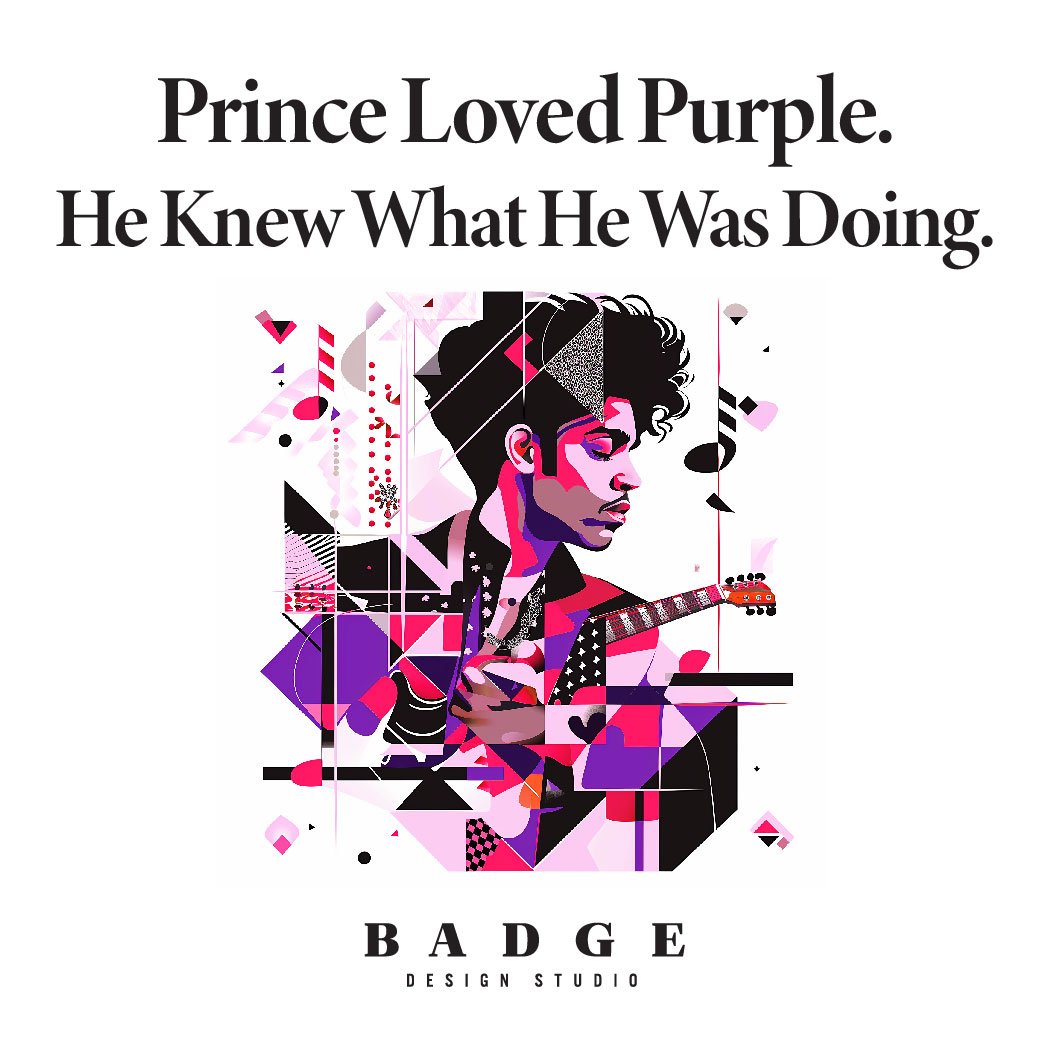Color Psychology – Purple Reign
Any designer that has worked with me knows of my love for the color purple.
Not the movie, but I do like that as well; no, the actual color of purple.
Purple is not a warm color nor is it a cool color – it’s just an awesome color with an interesting history and the ability to trigger emotion from its viewers.
Let’s take a look at the intricate history of the one color that has left an incredible mark on art, culture, and symbolism – the mysterious and rich color purple.
The Birth of Purple
The journey of purple begins thousands of years ago, where simply creating the color was a difficult chore. Unlike other colors you could easily find, purple had to be extracted from nature in the form of the Murex mollusk.
Inside the Murex, there's a gland that produces a yellowish liquid. But here's where it gets cool – when this liquid is exposed to sunlight, it changes like magic. The sunlight makes it turn from yellow to a beautiful purple.
Ancient civilizations, particularly the Phoenicians, Egyptians, and later the Romans, needed to diligently collect thousands of mollusks to harvest enough liquid from the Murex for dying clothing or tapestries. Because of how painstaking it was, the result was a color so revered that it became synonymous with prestige and power.
Royal & Religious Significance
Purple's association with royalty is deeply rooted in history. In ancient Rome, only the highest echelons of society, including emperors, were permitted to adorn themselves in garments dyed with this rare color.
Beyond the realms of royalty, purple found its way into the spiritual world as well. For Christianity and Buddhism, purple holds profound importance.
Within Christianity, purple takes on a dual role, symbolizing both penance and the regal attire of Christ. During Lent, clergy don purple vestments, marking a season of reflection and spiritual preparation.
In Buddhism, purple represents enlightenment, evident in depictions of revered figures such as Buddha. Here, purple signifies spiritual transcendence and the highest state of awakening.
In both Christianity and Buddhism, purple surpasses its role as a mere color, becoming a divine symbol within religious rituals that represents the profound aspects of spirituality and enlightenment.
Cultural Differences with Purple
As we’ve previously discussed, color meaning can vary from culture to culture. Purple is no different with varied meaning between Eastern and Western traditions.
In Western cultures, purple often symbolizes luxury, royalty, and regality, historically linked to its scarcity and extraction from precious sources like the Murex mollusk.
Conversely, Eastern cultures may attribute different meanings to purple, with interpretations shaped by regional histories, traditions, and societal contexts. For instance, while purple is associated with mourning in some Eastern cultures, signifying introspection and spirituality, Western counterparts may link it more strongly to opulence and prestige.
These cultural nuances underscore the importance of considering regional differences in color symbolism when navigating the expressive potential of purple in design and communication.
Purple Today
Fast forward to today, where the availability of synthetic dyes has democratized the use of purple. No longer an ordeal to produce, it’s readily available to anyone. Has that altered our perception of the color?
No! Not really. In contemporary marketing and design, purple still carries similar connotations and is viewed as a versatile and impactful color, transcending traditional associations to embody a sense of creativity, sophistication, and innovation.
Marketers strategically leverage purple to convey a brand's uniqueness and forward-thinking identity, tapping into its ability to evoke a sense of luxury without alienating broader audiences.
Its adaptability allows it to resonate across various industries, from tech companies seeking to convey innovation to beauty brands expressing a blend of luxury and creativity.
As a result, purple stands as a highly versatile color for any designer or marketer, capable of communicating a brand's essence with a sense of modernity and elegance.
Conclusion
In conclusion, purple has a rich history and a lasting impact on art, culture, and symbolism. From the challenging process of extracting it from the Murex mollusk to its association with power in ancient Rome, purple signifies regality and spirituality.
Today, synthetic dyes make purple more accessible, yet it retains its timeless appeal. In marketing and design, purple conveys creativity and sophistication, making it a versatile and powerful tool. Prince knew what he was doing.

